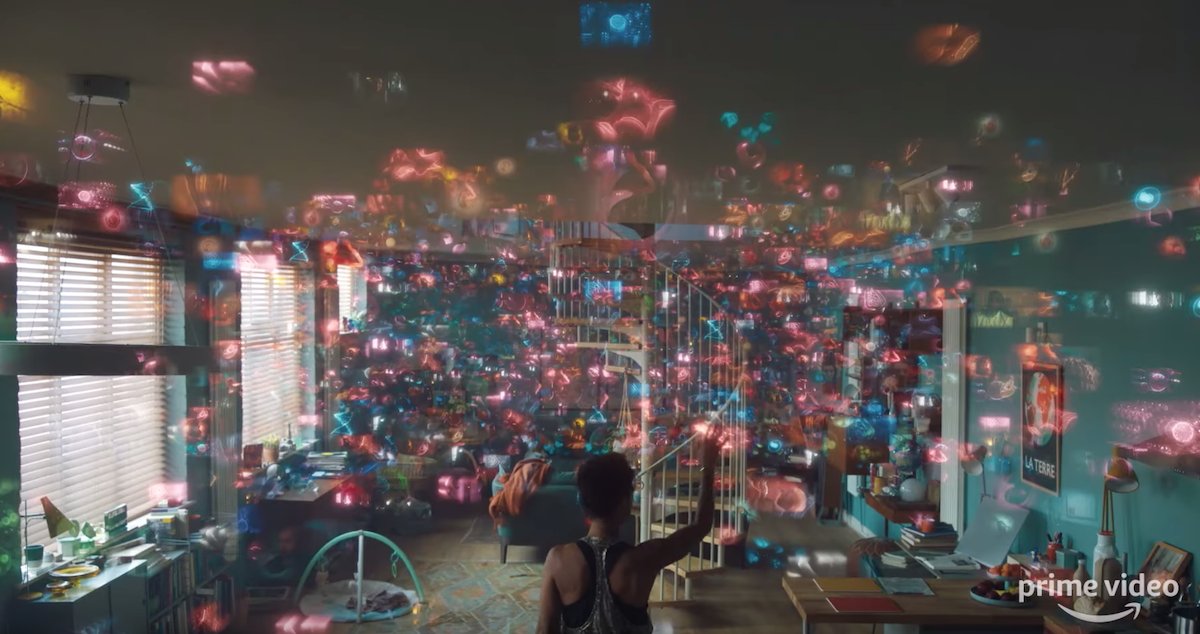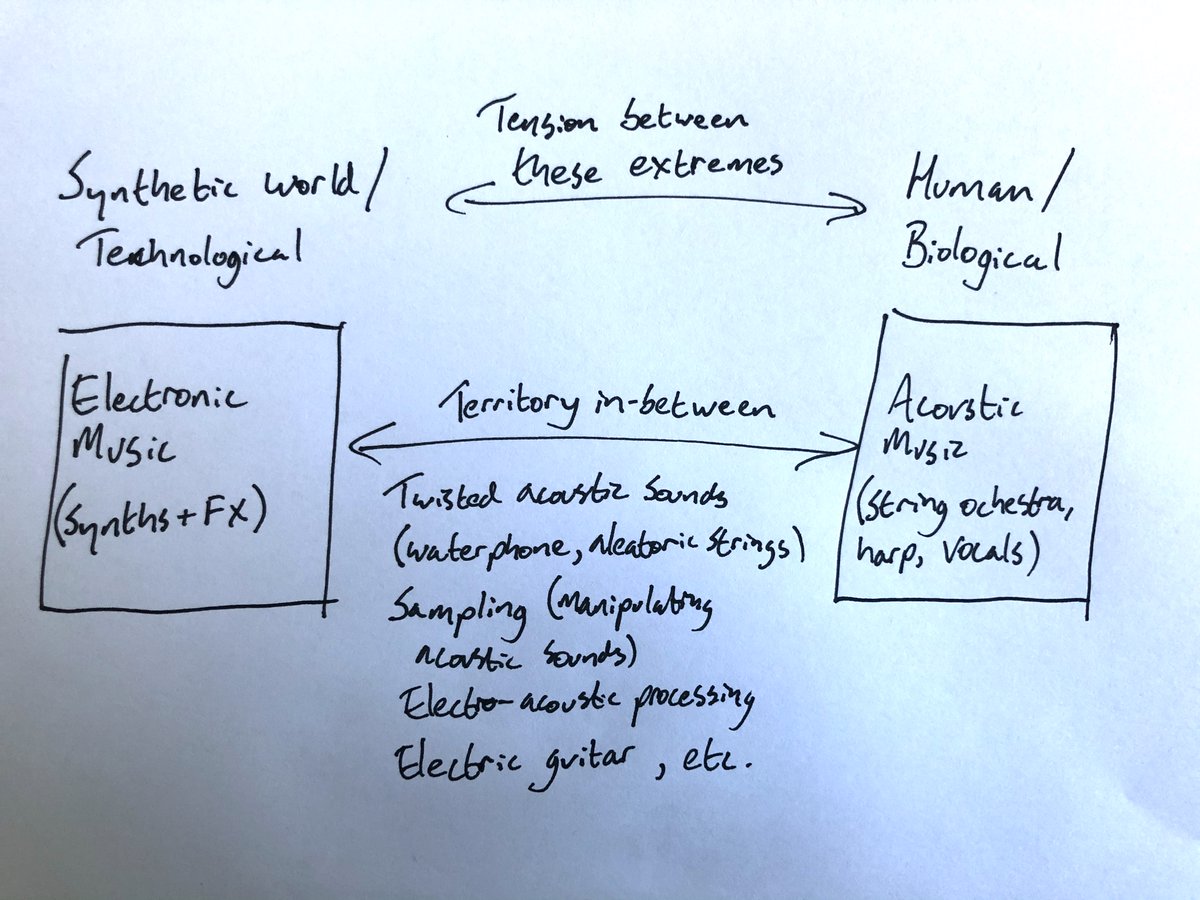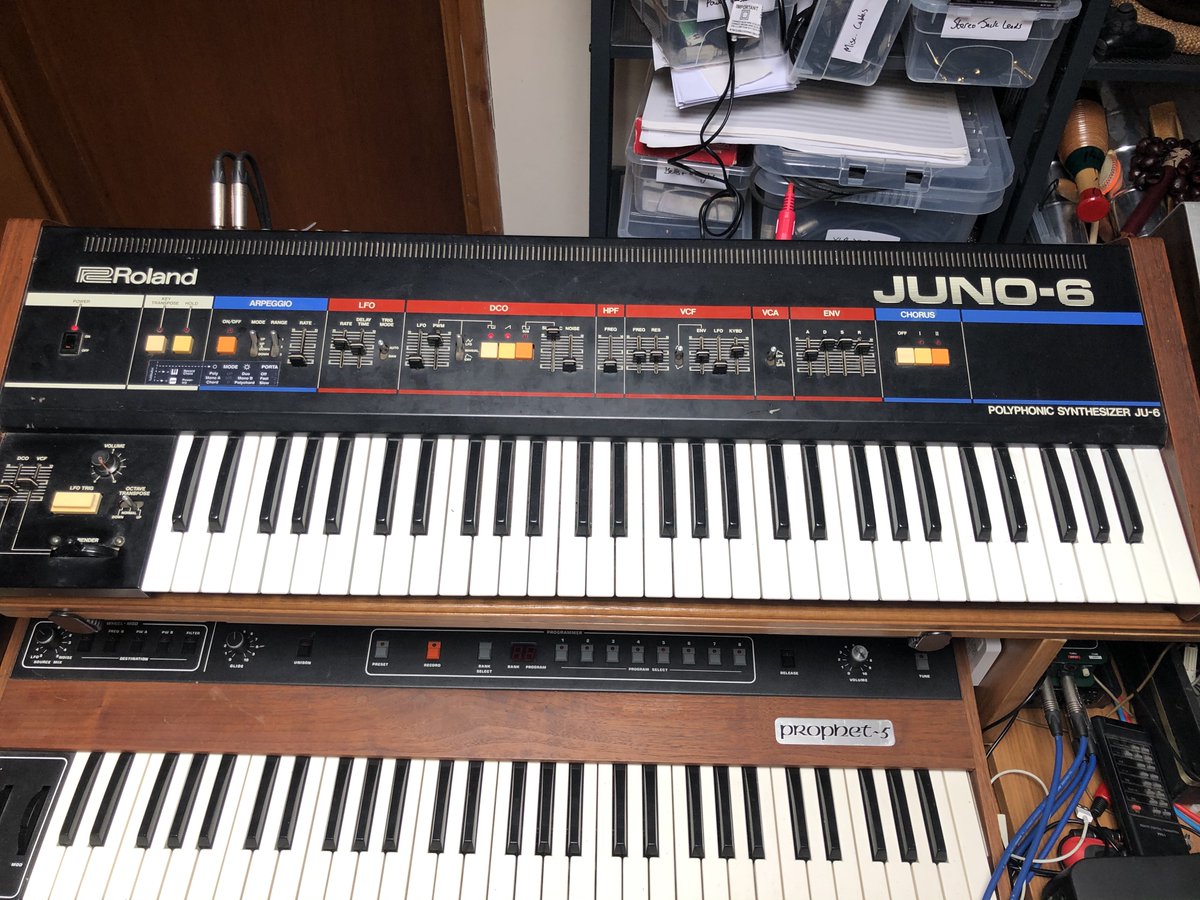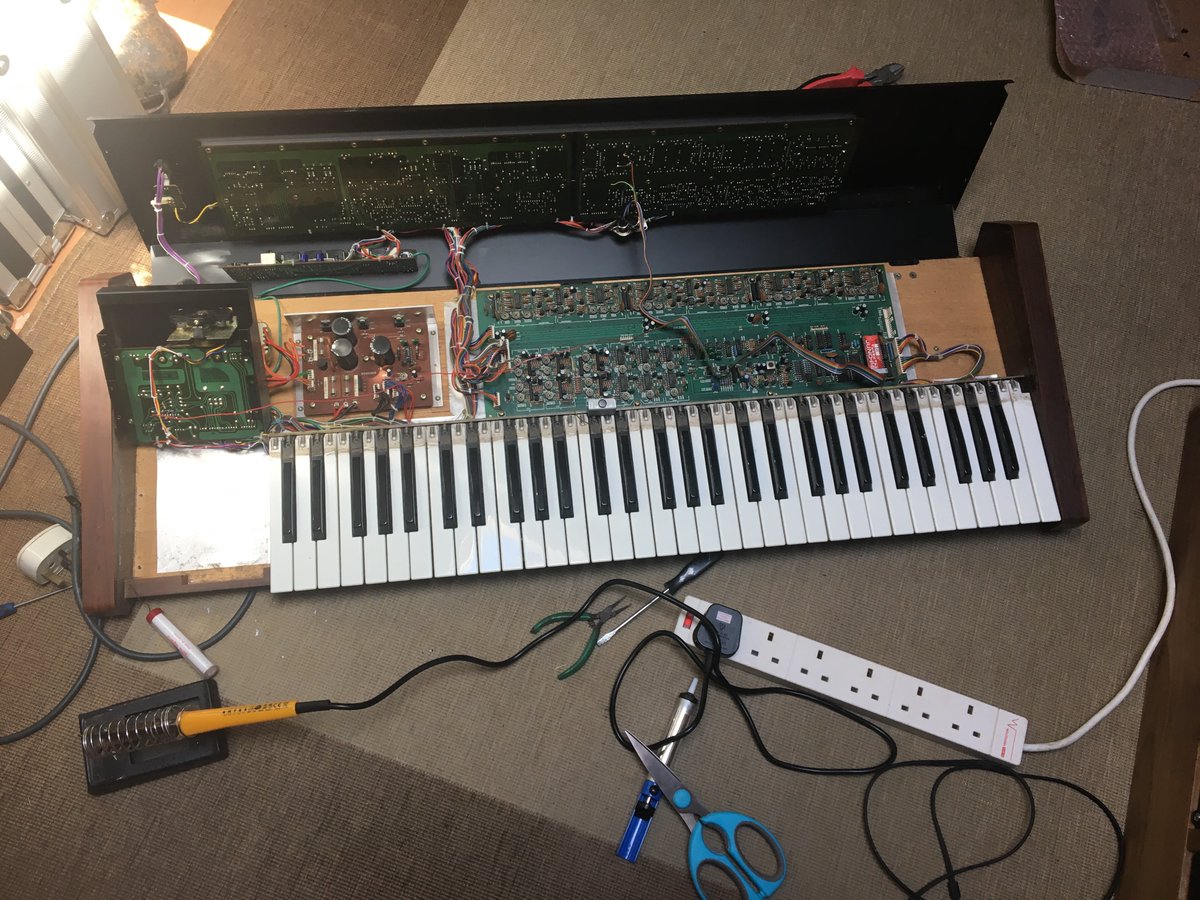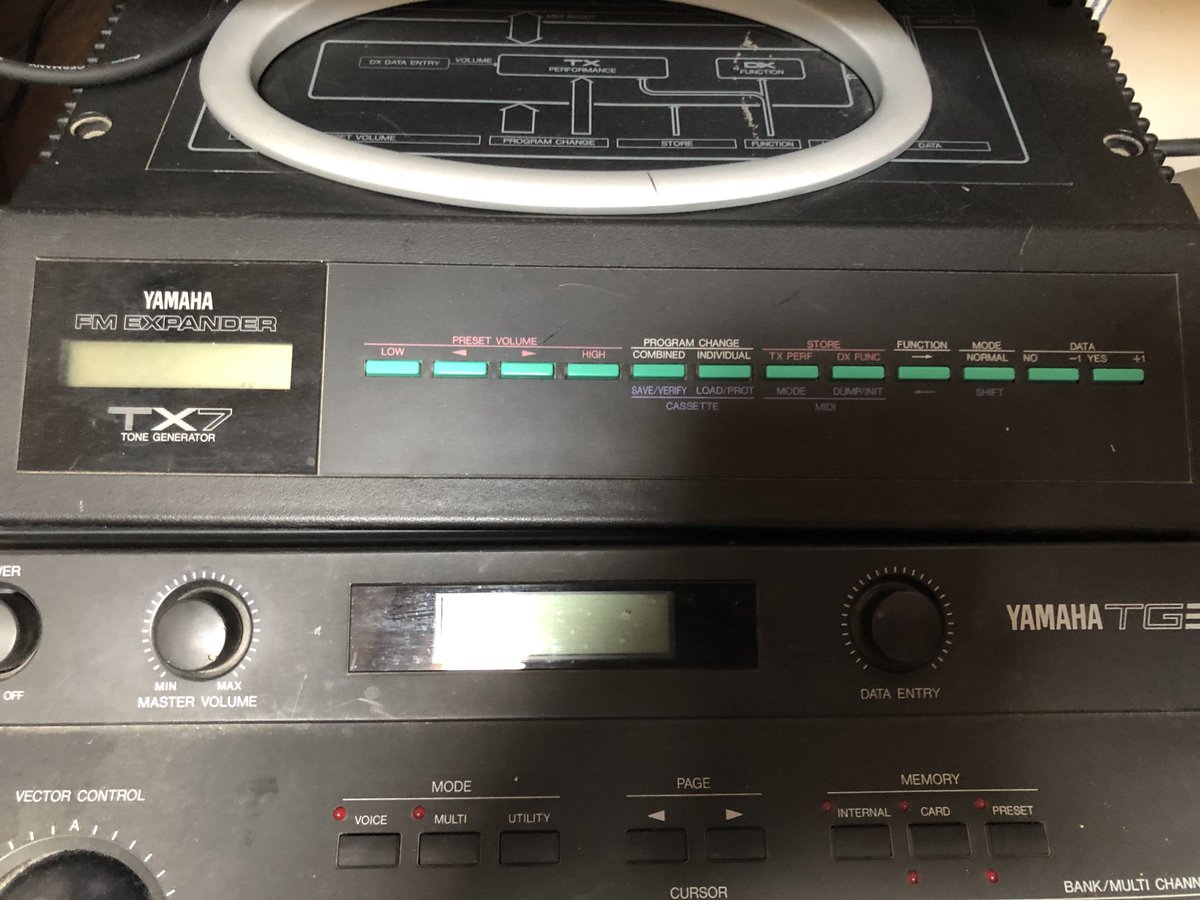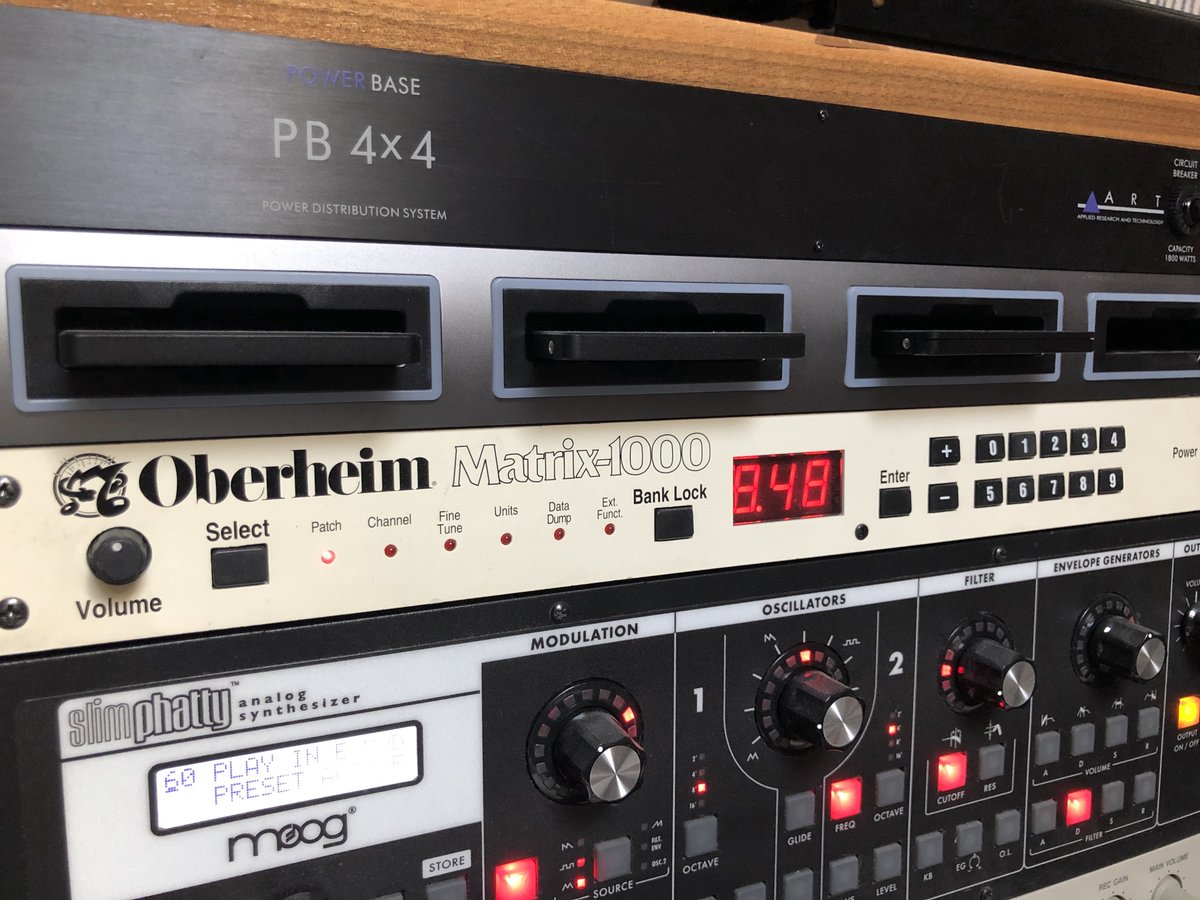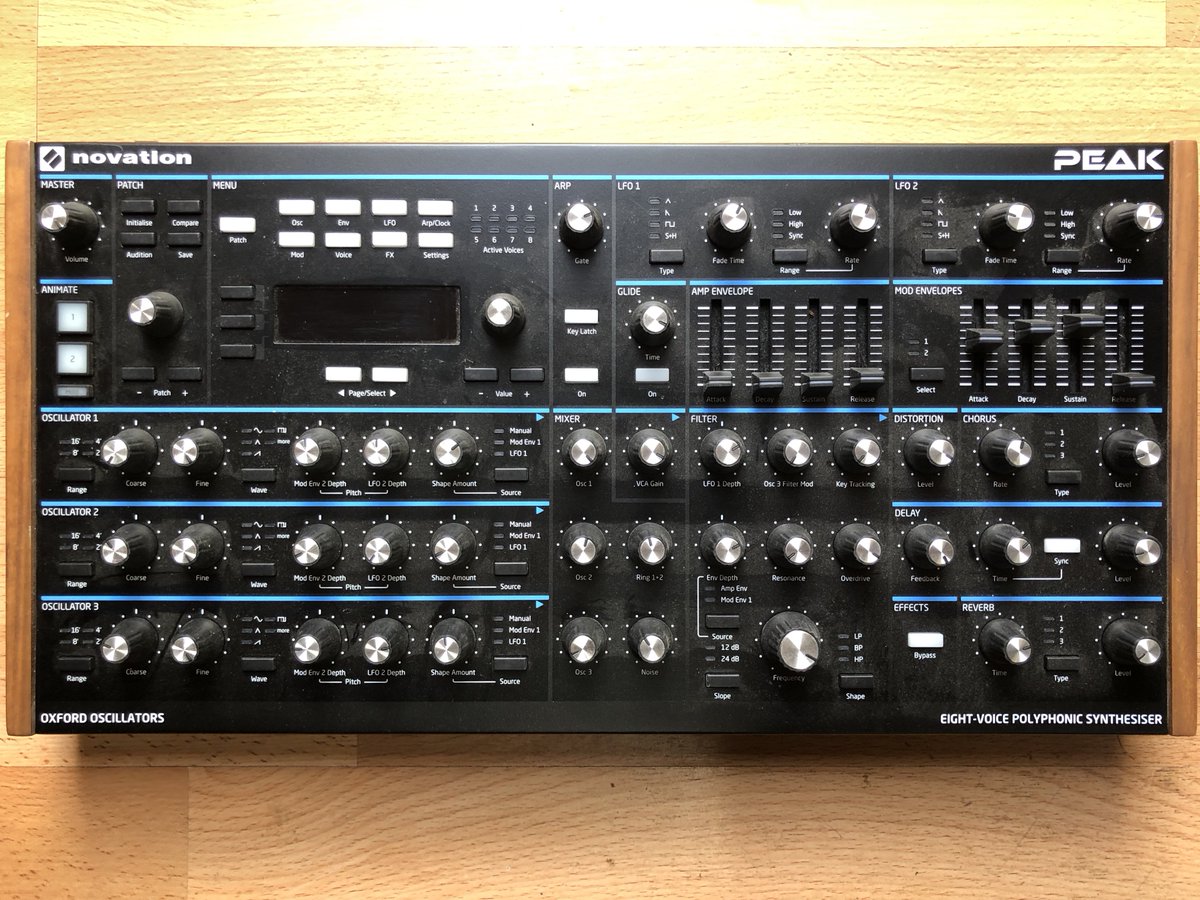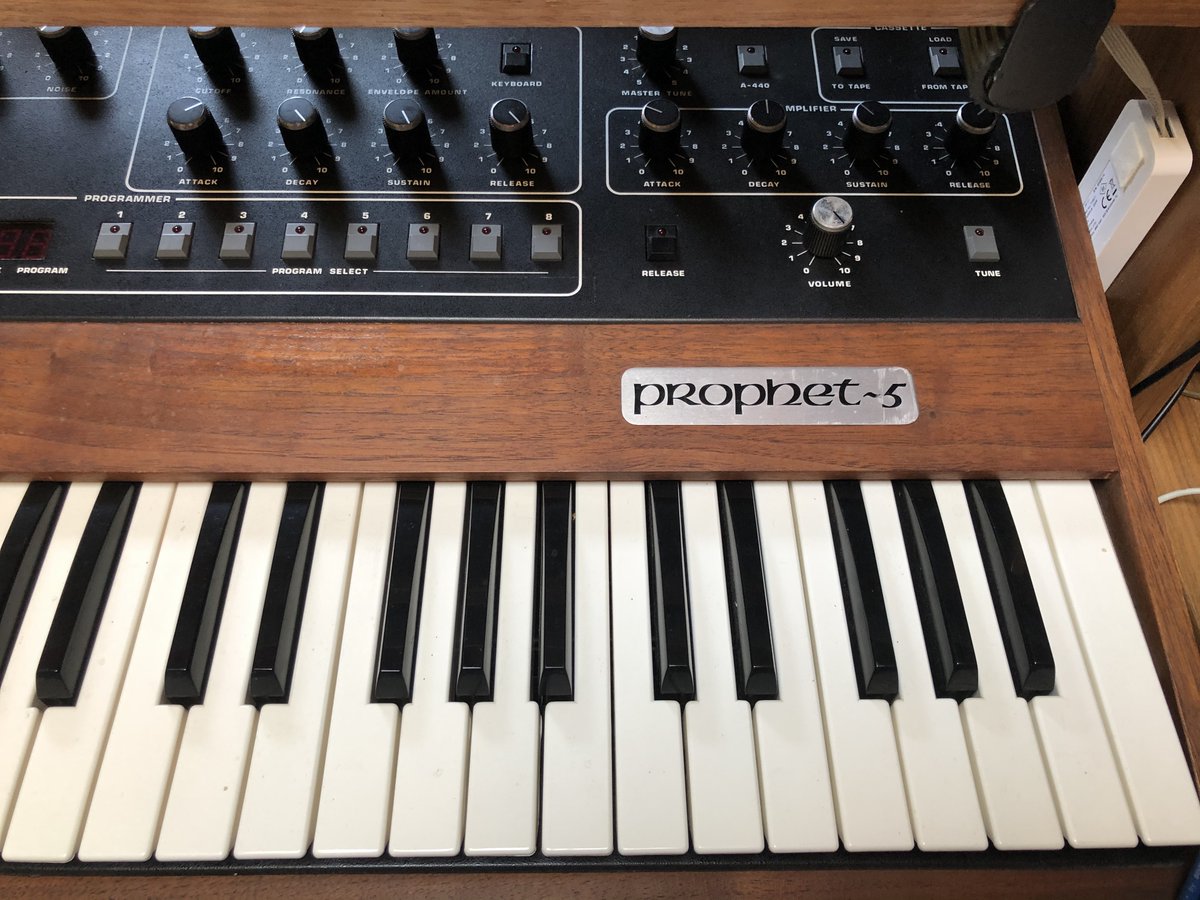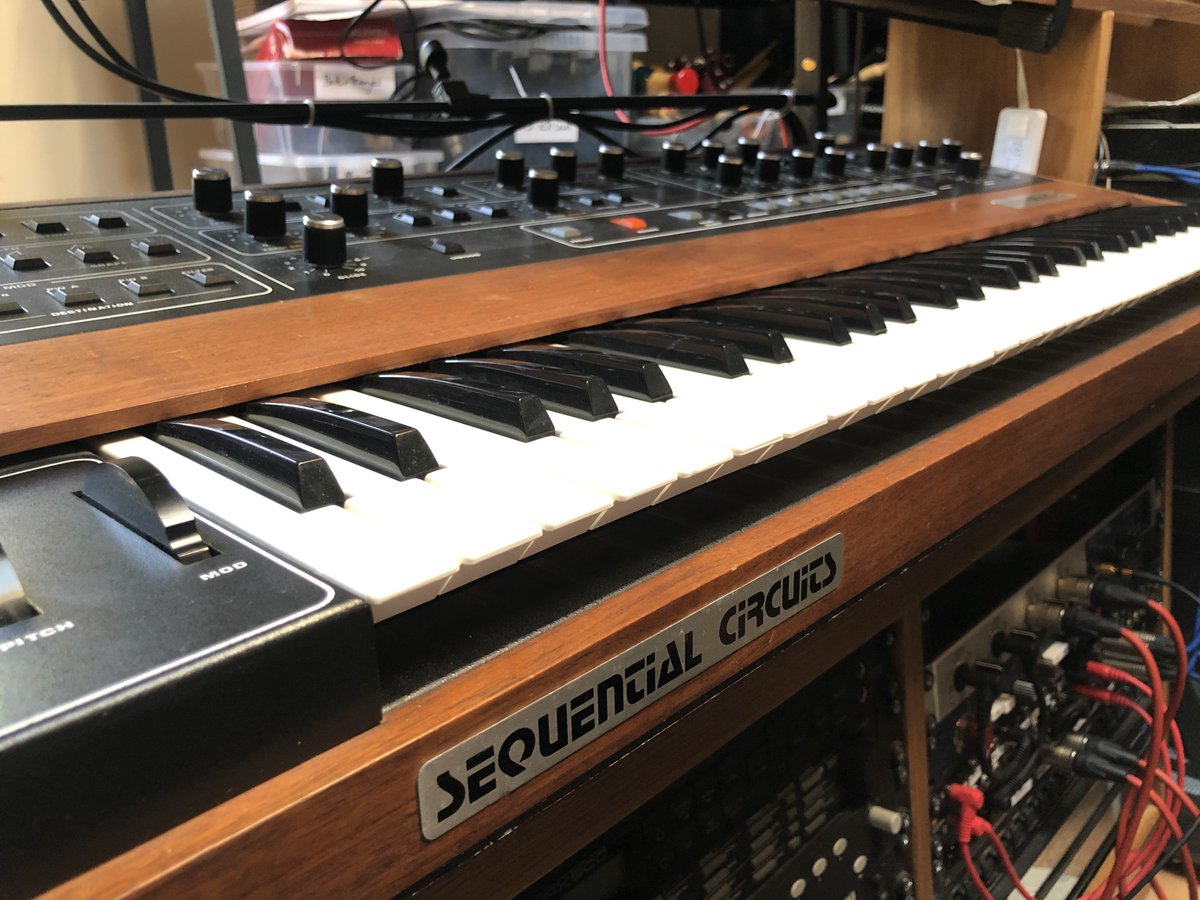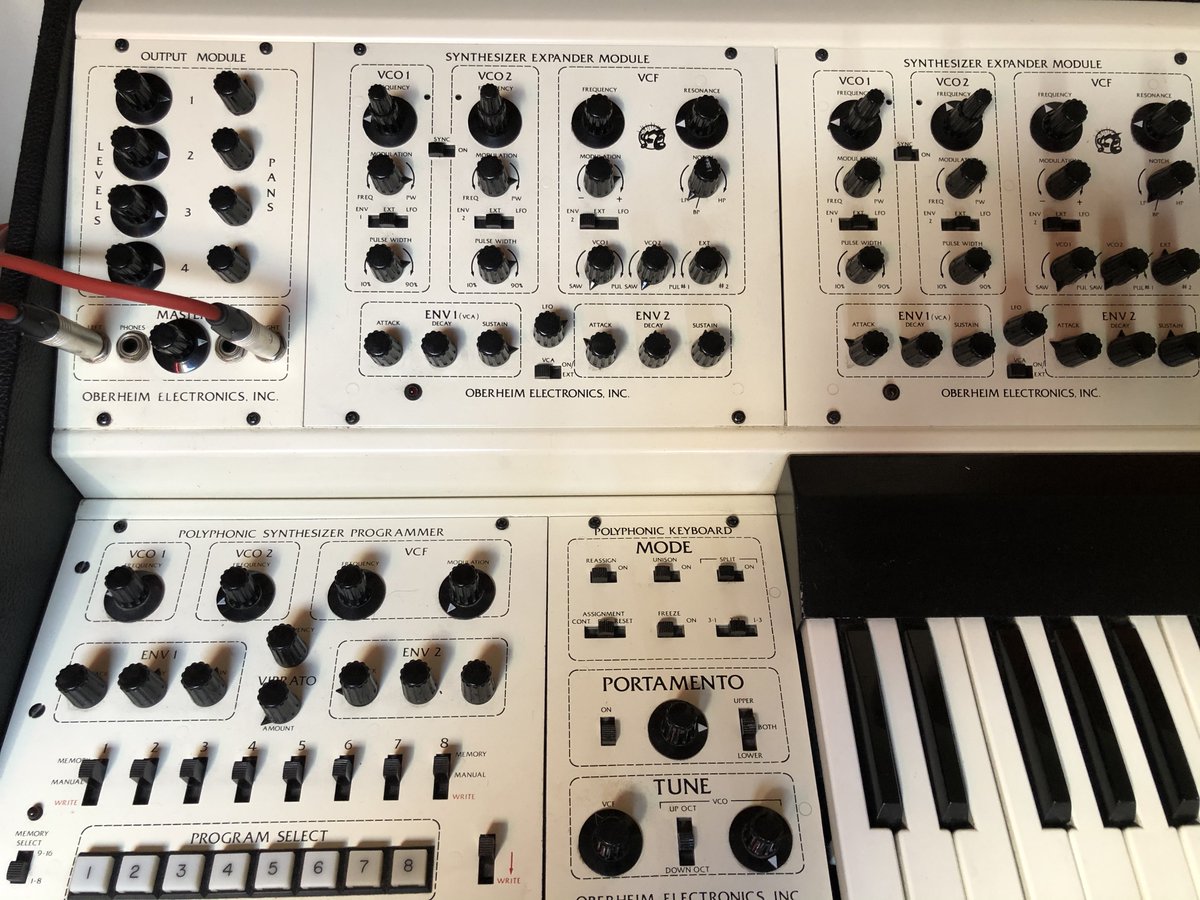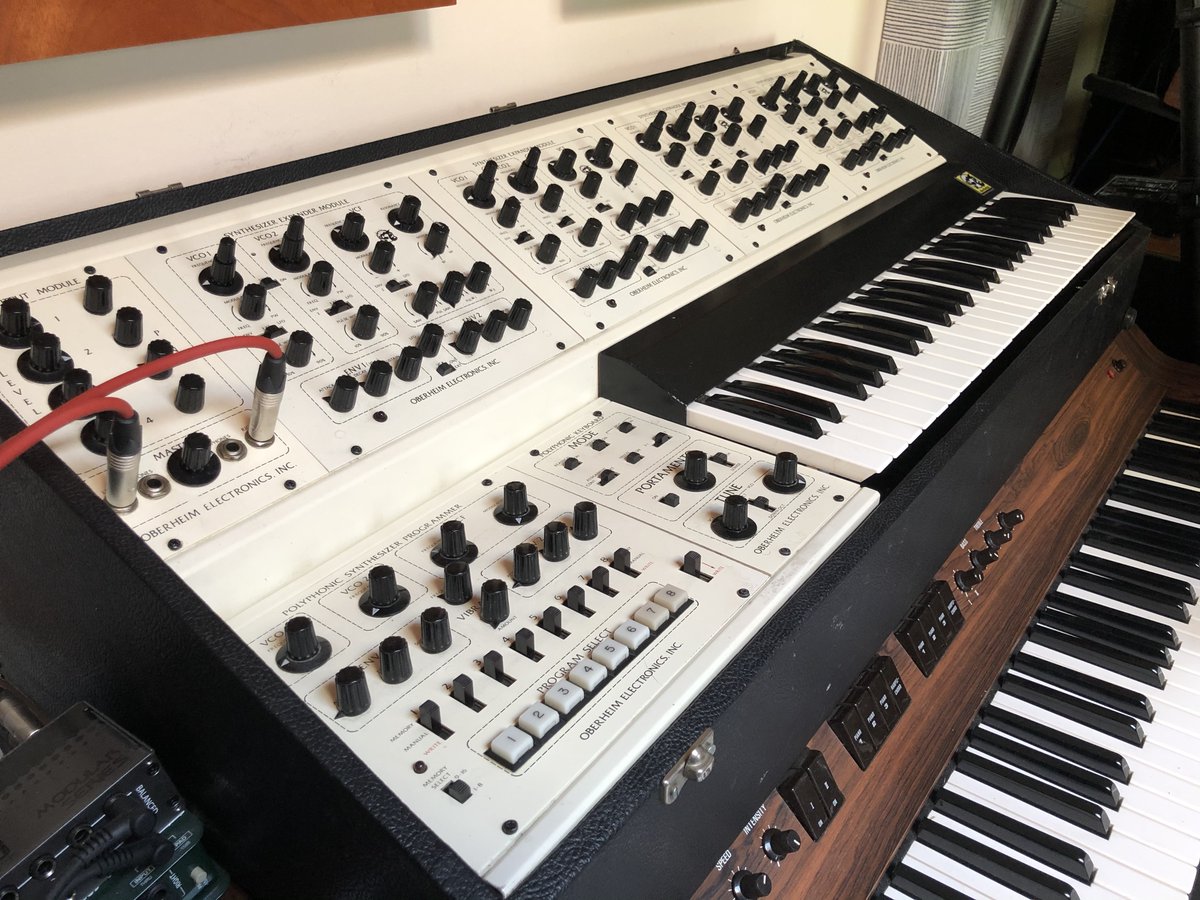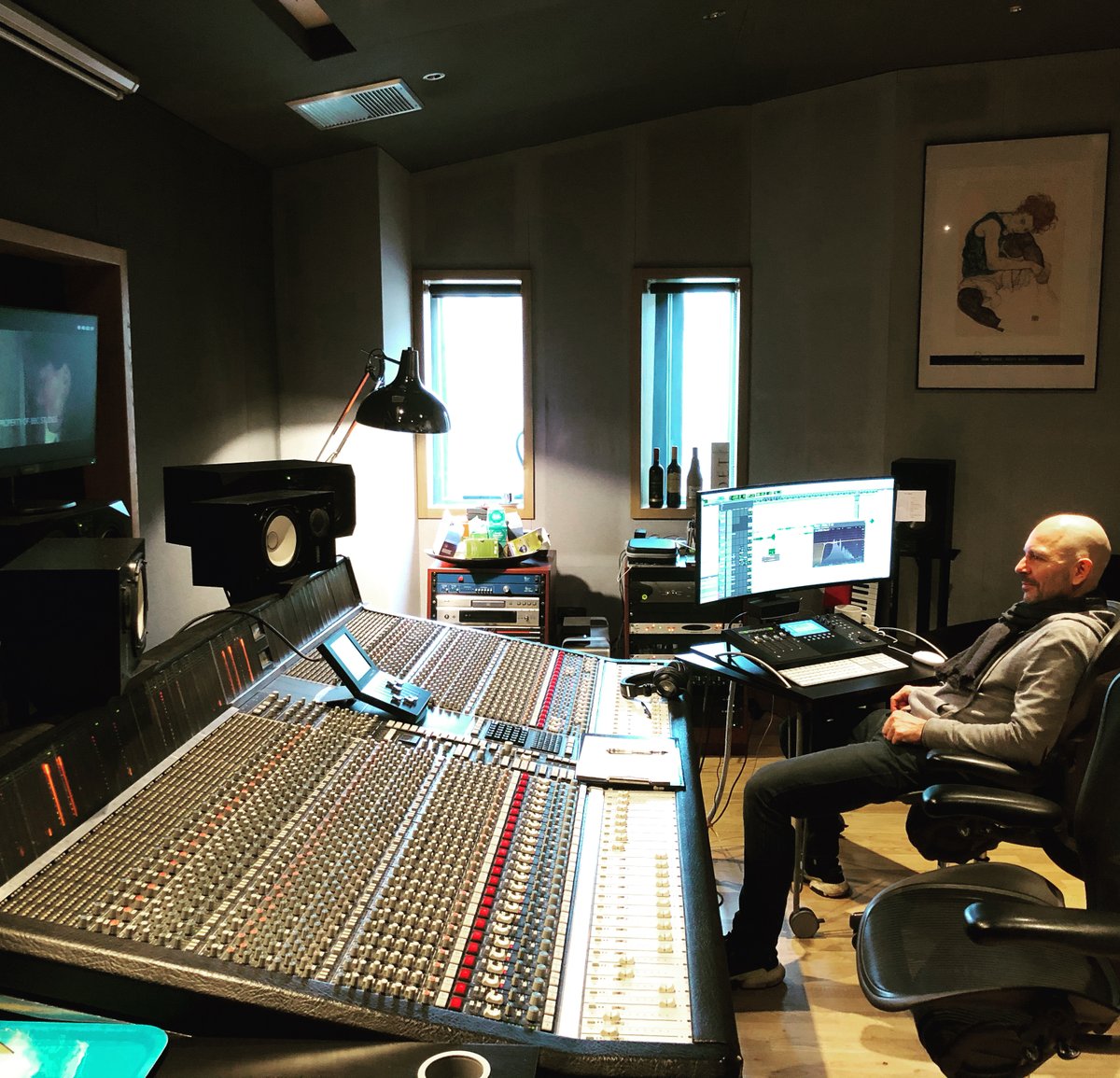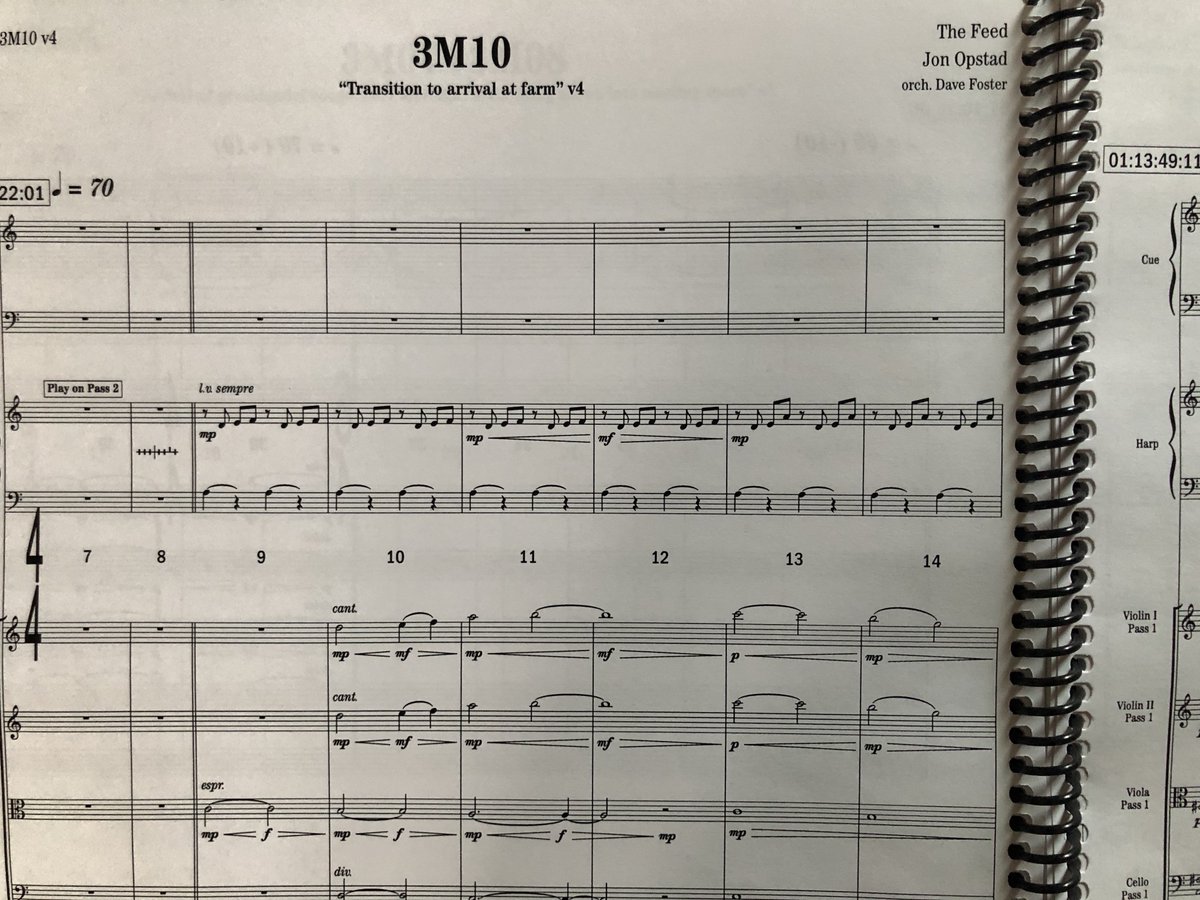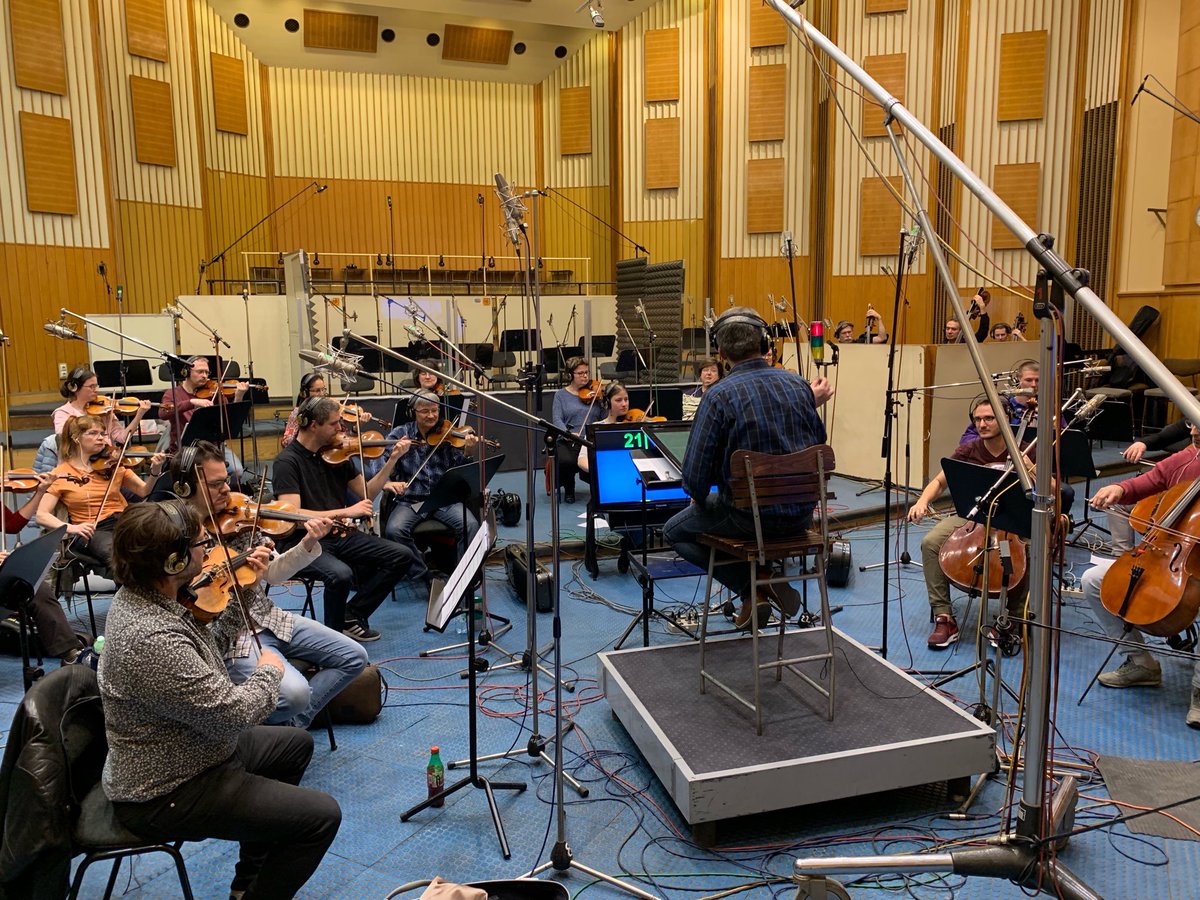1) Now that THE FEED is available in the UK through @AppleTV I’ve enjoyed sitting down and watching the series on TV for the first time since completing it. Reminded me how much work I put into the sound of the show’s score, so I thought I’d put a thread together on the music…
2) The world of THE FEED is a dystopian future w/ our brains hard-wired to a permanent social media feed. There are some looking to break away from this for a life ‘off’ from The Feed. This tension between virtual & real runs through the show & needed to be reflected in the score
3) Early on I decided on the concept of using electronic music to represent the synthetic online world of The Feed & acoustic music to represent the natural, biological side. What became interesting in the score was exploring the ground in between these extremes…
4) One of the first things I do on a score is really develop & explore the palette that I’m working with. For THE FEED it was really important to me that there was a human, emotive quality to the electronic elements in the music, to fit with the narrative…
5) I wanted to create as much of the electronic side of the score as possible outside the computer, using hardware synths & effects rather than plugins. I felt this would push me to sculpt the sounds in more interesting & expressive ways. Here are a few of the instruments used…
(if you’re allergic to synth talk then you might want to hold out for when I discuss other aspects of the score below  https://abs.twimg.com/emoji/v2/... draggable="false" alt="🙂" title="Leicht lächelndes Gesicht" aria-label="Emoji: Leicht lächelndes Gesicht">)
https://abs.twimg.com/emoji/v2/... draggable="false" alt="🙂" title="Leicht lächelndes Gesicht" aria-label="Emoji: Leicht lächelndes Gesicht">)
6) First up, the Roland Juno 6 analogue synth, running through 2 @strymon guitar pedals – the Big Sky & TimeLine. The Juno is a simple synth but with a great, round sound to it that I knew would be a fundamental element of the score. The pedals gave the sound loads of extra depth
7) One of my favourite things about the Juno is how you can adjust how much the pitch lever controls a balance of pitch & filter cutoff (i.e. how bright/dark the sound is). Setting this to just slightly affect the pitch & more filter makes it a really expressive synth, like this
8) On previous electronic scores, like Black Mirror, I had used a Juno 106 synth, but my one was becoming increasingly unreliable so in setting up for THE FEED I decided to replace it with a Juno 6, which I now prefer the sound of…
9) The Juno 6 doesn’t have MIDI as standard so I made the questionable decision to install the MIDI conversion kit myself, which turned out to be far more stressful than expected & meant that I briefly thought I’d completely broken the synth! Luckily it all came out fully working
10) As well as the Juno I experimented with running a number of other synths through the @strymon pedals, like the Yamaha TX7 (which is the classic DX7 without the keyboard), Oberheim Matrix 1000 and @WeAreNovation Peak…
11) Right at the start I put some time into experimenting with what sounds & textures I could get out of running these instruments through the guitar pedals. Here’s a random selection of some of the sounds created. Some of these sounds made it into the score, some didn’t
12) These early improvisatory experiments proved valuable throughout. As well as being threaded as textures through the score there are sometimes whole cues using this material, like this short emotional moment from ep10 created from an early improvisation on TX7+pedals
13) Apart from the Juno, the other two main analogue synths used throughout the score were the Prophet 5 and Oberheim Four Voice. These instruments are over 40 years old. In the case of the Oberheim there is no workable way of saving the sounds – the sound is crafted...
14) from scratch each time I use it. There is something about this, and the immediacy of manipulating the sound as it’s played that pushes me in a different direction than when using computer plugins, and which really suited this project.
15) I’m a firm believer that limiting your resources can increase your creativity. For a key scene in ep6 I set myself the challenge of creating the whole cue using just the Prophet 5 synth and no other instruments/samples. Here’s the Logic session for that cue…
16) Lastly on the synths front was this unusual instrument – a @Folktek Mescaline – which was used for a theme running through the score. It has a haunting tone almost like weirdly processed brass, which fit well with the somewhere-between-electronic-and-acoustic concept
17) I also experimented with getting other unusual sounds from the @Folktek Mescaline. This sound didn’t make it into the score, but others like it did…
18) Finally on the electronic side of things a last key element was the @WeAreROLI Seaboard, which I bought for the project as I thought it would be perfect for getting even more expression & emotion from the electronics. Used with the brilliant @slateandash AURAS sample library
19) That’s it for the electronic aspects of the score. I’m going to pause there & return to this thread later. Lots more to talk about for the strings, vocals, guitars, percussion side of things. To close things off here’s the first cue of ep10, performed just with Juno+Oberheim
20) In the later stages of working on the score for THE FEED I had a really brilliant small team around me of mix engineer Goetz Botzenhardt ( @GoetzB1), orchestrator Dave Foster and music editor Lindsay Wright ( @lndsywrght), who each did amazing work on the score.
21) I first met Goetz ( @GoetzB1) when we both worked on Martin Phipps& #39;s score for the film X+Y in 2014. Goetz is an amazing engineer & apart from THE FEED he& #39;s also mixed my scores for THIRTEEN & WE HUNT TOGETHER. He did a brilliant surround mix of the score for THE FEED.
22) I had briefly crossed paths with orchestrator Dave Foster on a Max Richter project that we both worked on several years ago, but THE FEED was the first time that I had worked with him properly and his work on the score was completely invaluable.
23) @lndsywrght& #39;s work on the score - as music editor for eps 4 to 10 - was also invaluable. Lindsay& #39;s a very talented composer, as well as having been music editor on scores like THE CROWN, for Martin Phipps, & did a brilliant job helping me rework material for different scenes.
24) All 10 eps of THE FEED feature string orchestra (25 strings+harp) performed by the excellent Budapest Art Orchestra.
25) Ep3 is the first time that the characters disconnect from The Feed in a rural setting away from the city. Entirely acoustic music is heard in the score for the first time. Here is the Piano Roll in Logic for that cue, lined up to the final strings recording
26) Acoustic strings are also used thematically for the "resistors" - a rebel group who fight to stay disconnected from The Feed. Here is the Logic Piano Roll for a "resistors" cue from ep4, built around a repeating 5/8 motif, lined up to the final strings recording.
27) At some points in THE FEED the string orchestra is augmented with solo cello. This emotional cue from ep8 features some beautiful playing from @petergregson. I& #39;ve shown my original Logic file for the cue here, but with the final recorded strings (no samples).

 Read on Twitter
Read on Twitter
